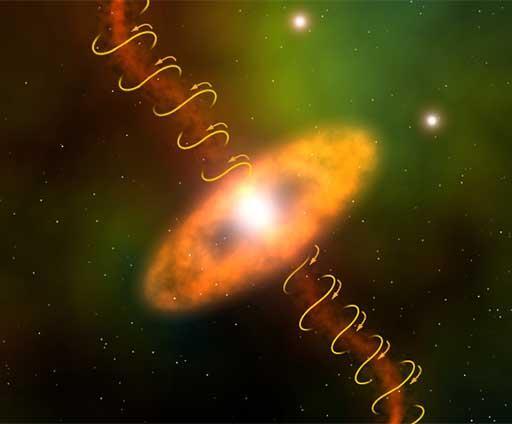
In a first, Indian astronomers detect circular polarisation near young star
The formation of massive stars has long been a topic of interest and intrigue for astronomers. These stars, with their immense size and energy, play a crucial role in shaping the universe as we know it. However, the process of how they form is still shrouded in mystery. Recently, a team of astronomers from the Indian Institute of Space Science and Technology (IIST) made a groundbreaking discovery that has shed new light on this process. For the first time, they have detected circular polarisation around a young, massive protostar, marking a significant step towards understanding how massive stars form in the universe.
What is circular polarisation?
Before we dive into the details of this discovery, it’s essential to understand what circular polarisation is. Circular polarisation is a phenomenon where light waves rotate as they travel through space. This rotation can be clockwise or counterclockwise, depending on the direction of the polarisation. In the case of the IIST discovery, the team detected circular polarisation around a young, massive protostar.
The discovery
The team, led by Dr. Sajal K. Dhurde, used the Atacama Large Millimeter/submillimeter Array (ALMA) telescope in Chile to detect the circular polarisation. The protostar they studied is known as MWC 158, and it’s located about 4,500 light-years away from Earth. MWC 158 is a young, massive protostar that is still in the early stages of its formation.
The team used ALMA’s capabilities to detect the circular polarisation in the light emitted by MWC 158. This was achieved by measuring the polarisation of the light as it travelled through the magnetic fields surrounding the protostar. The results showed that the circular polarisation was present in the light emitted by MWC 158, marking a significant discovery.
What does this mean?
The detection of circular polarisation around MWC 158 provides valuable insights into the formation of massive stars. The presence of circular polarisation indicates the presence of strong magnetic fields surrounding the protostar. These magnetic fields play a crucial role in shaping the formation of massive stars.
In the early stages of star formation, a protostar is surrounded by a disk of gas and dust. As the protostar grows, it begins to rotate faster and faster, creating strong magnetic fields. The circular polarisation detected by the IIST team is a result of the interaction between these magnetic fields and the light emitted by the protostar.
Implications for understanding massive star formation
The detection of circular polarisation around MWC 158 has significant implications for our understanding of massive star formation. The presence of strong magnetic fields and the resulting circular polarisation provide a new avenue for studying the formation of massive stars.
In the past, astronomers have relied on indirect methods to study the formation of massive stars. However, the detection of circular polarisation provides a direct way to study the magnetic fields surrounding these stars. This new information can help astronomers better understand the complex processes involved in massive star formation.
The future of research
The discovery by the IIST team is a significant step forward in our understanding of massive star formation. As researchers continue to study MWC 158 and other protostars, we can expect to learn more about the complex processes involved in the formation of these massive stars.
The detection of circular polarisation also opens up new avenues for research. Astronomers can use this new information to study the magnetic fields surrounding massive stars, which can provide insights into the formation of these stars.
Conclusion
The detection of circular polarisation around MWC 158 is a significant discovery that has shed new light on the formation of massive stars. The presence of strong magnetic fields and the resulting circular polarisation provides a new avenue for studying the formation of massive stars.
As researchers continue to study MWC 158 and other protostars, we can expect to learn more about the complex processes involved in massive star formation. The detection of circular polarisation is a significant step forward in our understanding of the universe, and it has the potential to revolutionize our understanding of massive star formation.






